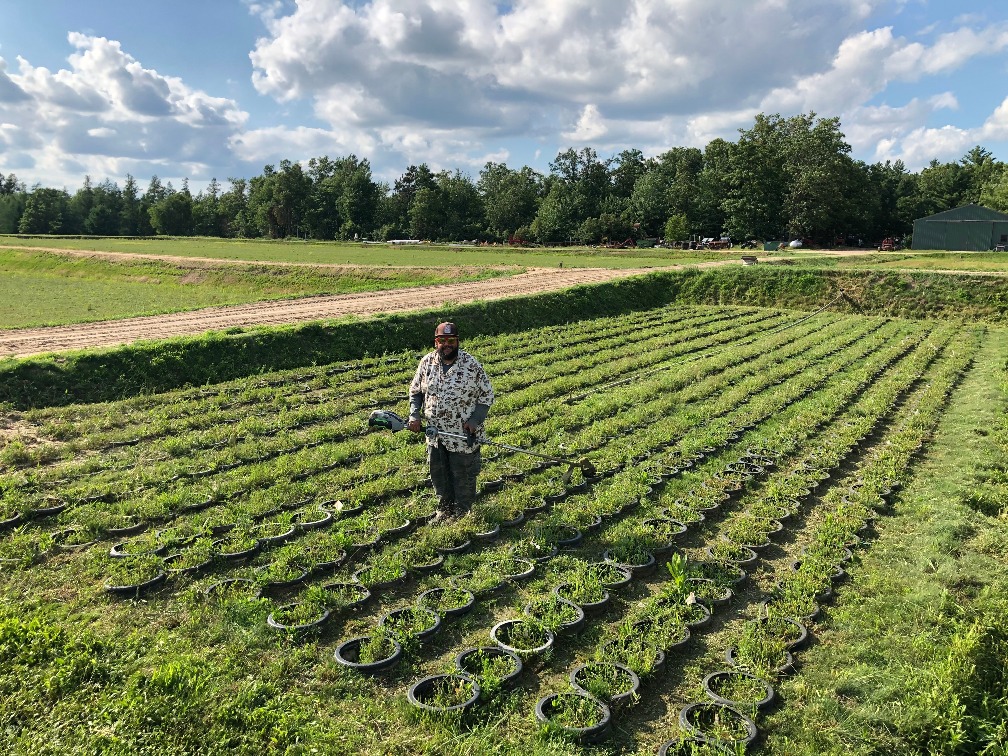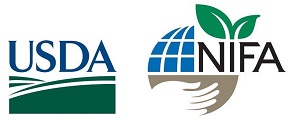Dr. Amaya Atucha sat down with Dr. Juan Zalapa to discuss his research on improving cranberry fruit quality traits, and what a more efficient cranberry means for the Vaccinium industry.
What is the main focus of your research program?
One main focus of my lab—the USDA Cranberry Genetics Lab—is to understand traits that help growers be more efficient at producing cranberries, with the ultimate goal of breeding cultivars that allow them to reduce inputs and maximize economic return. We have focused over the years on yield-related traits, mostly total yield and the size of the berries. In the last five to 10 years, there has been a shift from focusing on higher yield to an interest in producing high quality fruit. This has been mainly driven by the need to produce berries with improved fruit quality traits, such as color and firmness, to produce sweet and dry cranberries (SDC).
My lab has been working on developing tools to measure fruit quality, and it has been quite an interesting exercise to find out what fruit quality means for different people. We did a survey during the planning grant we got before VacCAP that allowed us to look at what traits the industry was interested in, and it was very clear fruit quality was an important trait, especially fruit firmness and fruit size—which my research group was already working on at that time.
Based on the information we gathered from this survey, my lab refocused on prioritizing fruit quality traits. However, to be able to make significant contributions in this area, we had to develop methods and techniques to be able to measure some of these traits, which is what we have been doing for a number of years now.
For example, firmness is a difficult trait to measure, because there are different ways of measuring firmness. We’ve done a lot of work to try to understand firmness and how that can be measured, and ultimately, how that can be used to produce a better SDC.
Now that we actually have an understanding of some of these traits and developed techniques to measure them, we are now in the process of developing cultivars and understanding the genetics behind how these traits are transmitted from parent to offspring.
The cranberry industry has really changed. About 15 or 20 years ago, priority was to increase yield and fruit color. But now with the development of new products such as the popular SDC used in cereal and granola bars, the industry realized that fruit quality traits, such as firmness, are key to produce SDCs.
But why is fruit firmness important in terms of cranberries?
Cranberries are processed in very unique way. Once the fruit is harvested, it goes in a freezer and is kept frozen until processing. Afterwards, the berries are thawed and sliced to make the SDCs. This process of freezing and thawing the berries makes them very soft, which ultimately makes the slicing process difficult because the skin separates from the pulp, meaning they basically fall apart.
Cranberries seem firm compared to other fruits, so why is their focus on firmness?
What we call firmness in cranberry is not really just the firmness to the touch, but we have discovered it is related to the thickness of the flesh. Cranberries are a very unique fruit because they have air pockets inside, which makes them hollow and this in part is the reason they float on water. The size of these internal cavities in combination with the thickness of the surrounding flesh affect fruit firmness. So, when we talk about firmness in cranberries, it is very different to firmness in other fruit crops such as apples or peaches where firmness is related to the density of the flesh and how it softens as the fruit ripens.
Where does VacCAP fit in all this? What outcomes do you hope for—in the short and long term?
The great thing about VacCAP is that it allows us to work with the blueberry team. They are also interested in many of the same fruit quality traits, and just like us they are developing ways to evaluate these traits. This is great because we can learn from each other and share methodologies and techniques.
We are also working on linking these traits to genetic components and finding out what genes control traits that matter for SDC production. Part of the project for VacCAP is to incorporate wild plant material, which is very unique. No one has used this approach before in Vaccinium to understand how these plants may contribute genes to traits that matter, like fruit quality. Overall, we are working on how to incorporate genetic diversity in our breeding program to improve fruit quality.
The final aspect is how to design strategies to bring those genes together. Once we know how those traits are measured, where they’re located in the chromosome, how they may be present or represented in different diverse plants all over the growing areas, then I can figure out how we can use all that information to bring genes together.
How does this all integrate in Vaccinium?
Blueberries and cranberries are closely related species, which means they have a lot of these genes in common. So how can all these genes be useable for all of us as Vaccinium breeders, and researchers and geneticists? This is the most exciting part: to see what we have in common and what we don’t, and then see how we can bring things together. In order to discover new things, what’s important is the populations you use, the plants you use, and the different techniques you can implement in your crop. So, we may have different techniques we can implement or different plants to bring in.
We’re getting almost two studies out of one. Anything that blueberry breeders and researchers find could be very useful to me, and the other way around. We are making sure we have all the elements to make sure everything is synched and we are able to use the information the other produces.
And that work can be extended. Vaccinium has hundreds of species. We’re only talking about five or six species we’re working on between blueberries and cranberries. But the work can be expanded to include species we don’t even know about that could bring in really interesting traits and so on. I think this is where the power of getting together with the Vaccinium community is really going to pay off.













